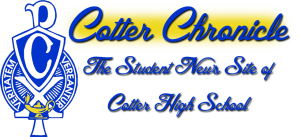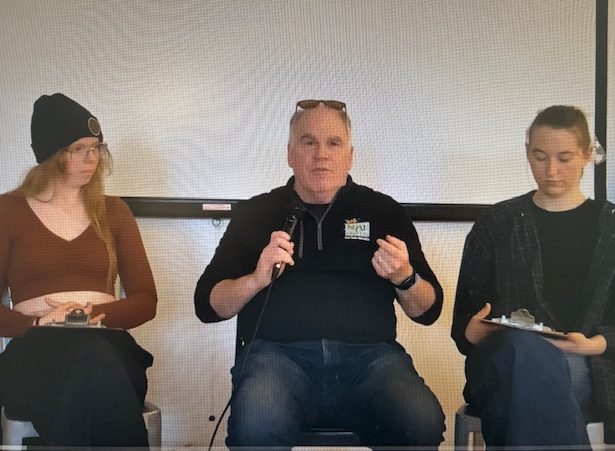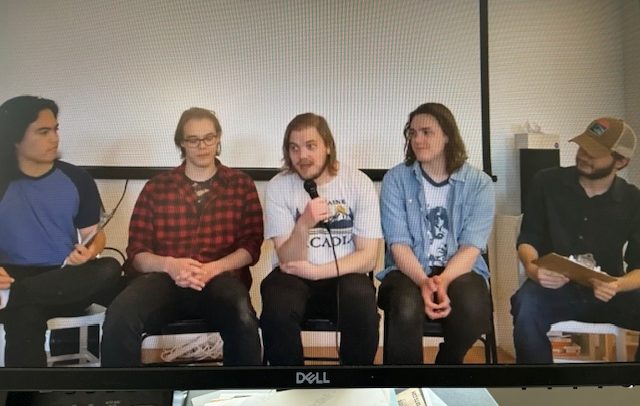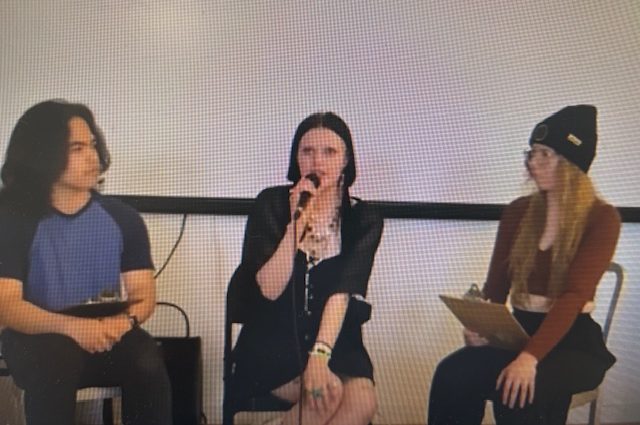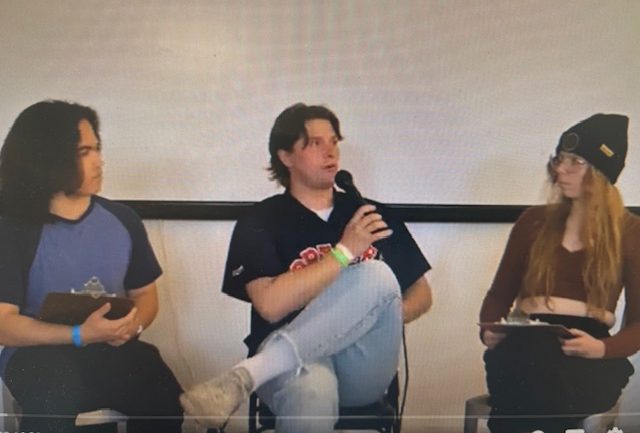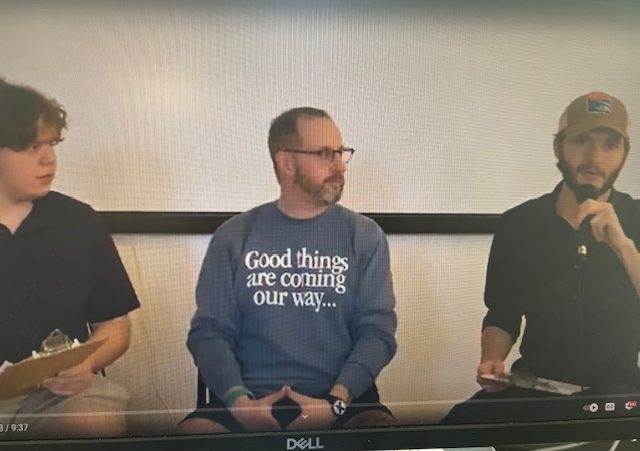What happens when a camera becomes more than just a tool, when it opens the imagination to color, character, and personal expression?
In a small studio where lights with colorful backdrops and a table are filled with weird props like balloons and dollar-store masks, Mr. Hodge is not just taking the picture. He is creating different worlds, and each click of the shutter is a step deeper into his imagination.
“I mostly do makeup-style portraits”, Mr. Hodge says. “ I start by setting up a backdrop-usually a solid bright color – then I set up the light and have my model sit there patiently then I start to take pictures. The setup is pretty simple”.

Off-camera and with that simple setup, a whole new frame is created. The table outside the frame becomes a powerful assistant for Mr. Hodge to showcase: masks, Spongebob goggles and strange-shaped toys. With these, he transformed his subjects into characters from science fiction films.
The photos reflect the creativity in the process, it is not just a normal portrait photo we often see, but it is imaginative and abstract while combining the props together. When asked about the inspiration to combine those props. Mr. Hodge said that he just followed what in his mind and imagined unrealistic things.
One of his students, Cotter sophomore Thao Anh Tran, reflected on the experience, “I was really surprised when I saw Mr. Hodge’s photos,” Thao Anh said.
“They don’t have elaborate background setups, but focus on the main character with simple but creative props, turning them into living works of art. I was also impressed by the portraits with angles similar to Da Vinci’s when he painted the Mona Lisa.”

Mr. Hodge tries to keep his photography technique pretty basic. “The camera is usually at eye level. The angles are very classic – Rembrandt lighting or split lighting”.
What’s special about those photos is not the angle or the way they were taken but “they way I make the character inside the photos look strange”
Being asked what is a beautiful picture, he explained: “What makes a photo beautiful to me is the tension between colors. I try to create interest from the actual makeup. Then I do some light editing- up the color tone, tweak the hue a little to fit the composition but still retain its essence.”
Colors play a central role in his storytelling. “I often age digital images by adding grain or old film overlays to create a sense of strangeness and antiquity. I manipulated the color – for example, a yellow sponge might be set to a blue orange, a color that does not exist in real life”

Even with the help of photoshop tools such as Lightroom or Photoshop Adobe, he still lets the camera do the essence of the work.
“I try to create interest from the actual makeup. Then I do some light editing- up the color tone, tweak the hue a little to fit the composition”.
In an era where AI and filters dominate digital photography, Mr. Hodge remained faithful to the traditional approach. “I do not add things like sharks or AI effects. What I like is the physical creation- holding it, feeling it and transforming it with my hands.”

He has also experimented with images with AI-generated details as a way to learn more about art, as he teaches students how to use AI tools in his class.
One of his students commented when looking at this photo: “He teaches us using AI-generated tools in class, I thought that he also used it for his photos but he did not, I was surprised when I found out it was real”, she said.
For Mr. Hodge, photography is not a full-time job. It’s where he plays with art.
“I do screen printing more seriously, that’s my job. Photography is for fun—usually with friends. It’s like playing dress-up, talking, and making art together.” He has shot album covers for a few local bands, but his greatest joy is still inviting friends to the studio to have fun and create together.

